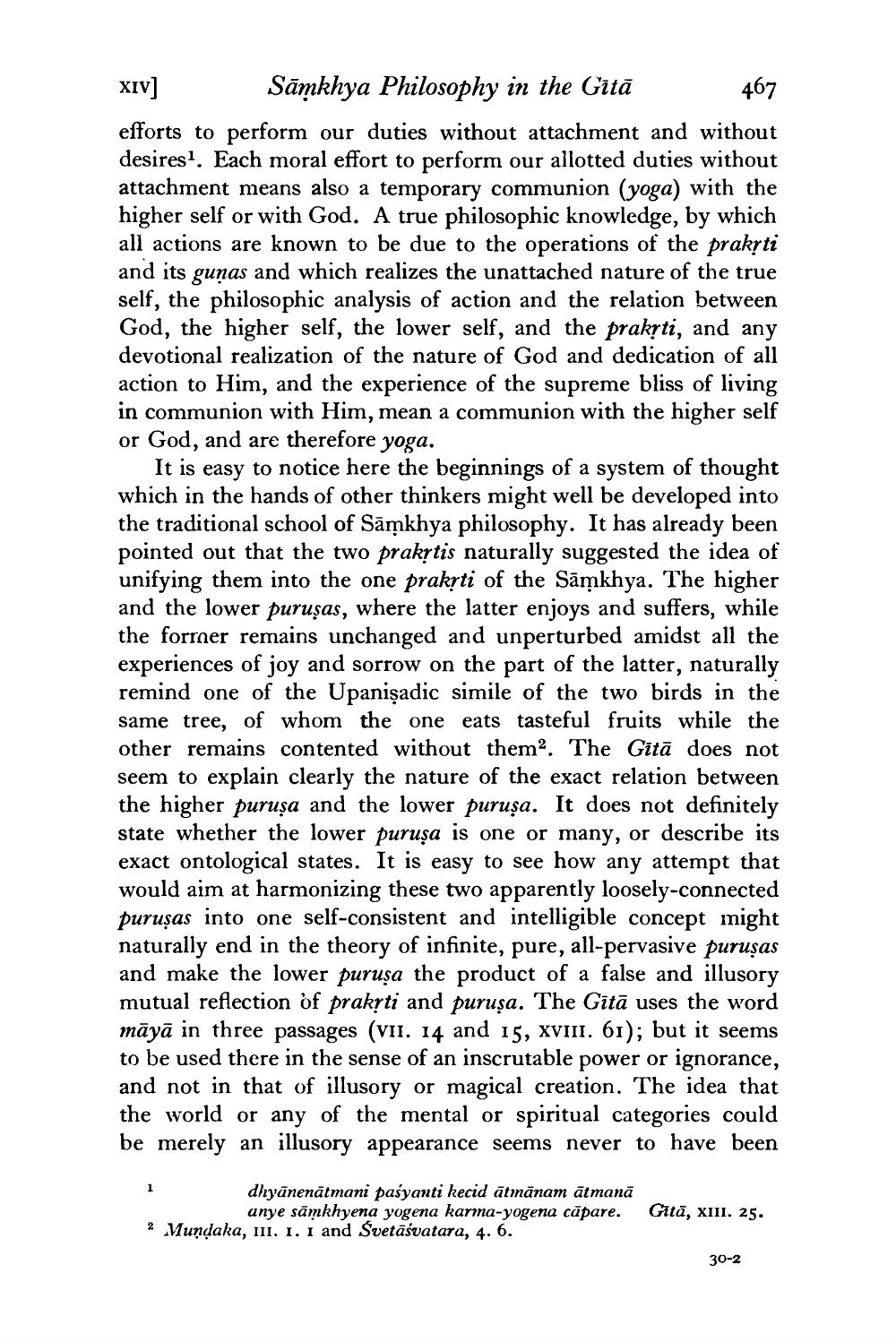________________
XIV] Sāmkhya Philosophy in the Gitā 467 efforts to perform our duties without attachment and without desires. Each moral effort to perform our allotted duties without attachment means also a temporary communion (yoga) with the higher self or with God. A true philosophic knowledge, by which all actions are known to be due to the operations of the prakyti and its gunas and which realizes the unattached nature of the true self, the philosophic analysis of action and the relation between God, the higher self, the lower self, and the prakrti, and any devotional realization of the nature of God and dedication of all action to Him, and the experience of the supreme bliss of living in communion with Him, mean a communion with the higher self or God, and are therefore yoga.
It is easy to notice here the beginnings of a system of thought which in the hands of other thinkers might well be developed into the traditional school of Sāmkhya philosophy. It has already been pointed out that the two prakrtis naturally suggested the idea of unifying them into the one prakrti of the Sāmkhya. The higher and the lower purusas, where the latter enjoys and suffers, while the former remains unchanged and unperturbed amidst all the experiences of joy and sorrow on the part of the latter, naturally remind one of the Upanișadic simile of the two birds in the same tree, of whom the one eats tasteful fruits while the other remains contented without them. The Gītā does not seem to explain clearly the nature of the exact relation between the higher purușa and the lower puruṣa. It does not definitely state whether the lower puruşa is one or many, or describe its exact ontological states. It is easy to see how any attempt that would aim at harmonizing these two apparently loosely-connected puruṣas into one self-consistent and intelligible concept might naturally end in the theory of infinite, pure, all-pervasive purusas and make the lower puruşa the product of a false and illusory mutual reflection of prakyti and puruṣa. The Gītā uses the word māyā in three passages (VII. 14 and 15, XVIII. 61); but it seems to be used there in the sense of an inscrutable power or ignorance, and not in that of illusory or magical creation. The idea that the world or any of the mental or spiritual categories could be merely an illusory appearance seems never to have been
dhyānenātmani pasyanti kecid ātmānam ātmanā
anye sāmkhyena yogena karma-yogena căpare. 2 Mundaka, III. I. I and Svetāśvatara, 4. 6.
Gitā, XIII. 25.
30-2




